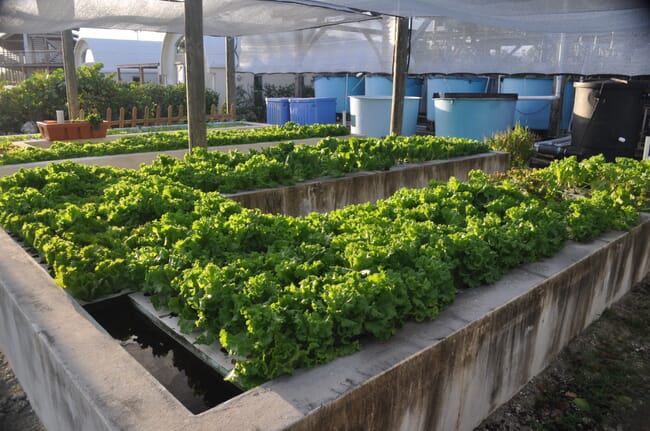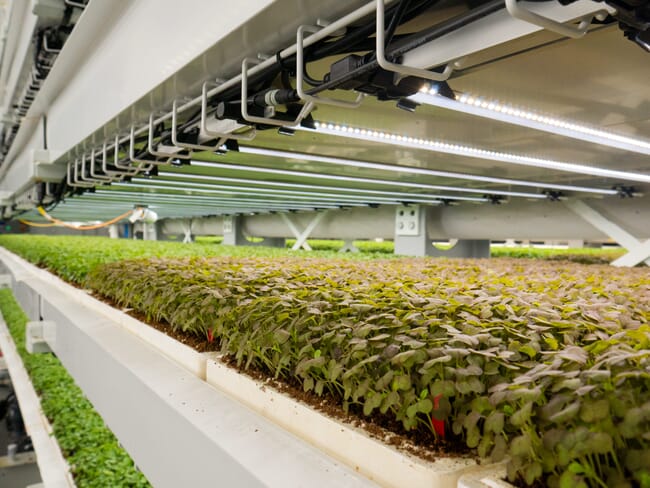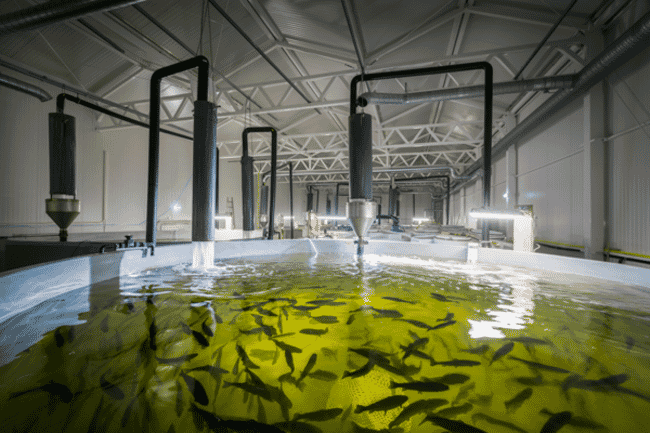
Researchers grew lettuce in a variety of hydroponic and aquaponic conditions to learn how about the microbial communities in these systems © Austin Stankus, FAO
Researchers at the University of Gothenburg and Wageningen University & Research grew lettuce (Lactuca sativa) under a variety of hydroponic conditions, including nutrient supplementation with a commercial hydroponic solution, nutrients derived from aquaculture of Nile tilapia (Oreochromis niloticus) and then with the inoculation of a probiotic or culture soil – with an aim of understanding the origin of microbial communities in aquaponics systems.
The role of the microbial community in mediating fish and plant culture is often considered the black box of aquaponics. Despite widespread recognition that plants depend on their rhizosphere – or the zone of chemical, biological and physical influence generated by root growth and activity – the extent to which aquaculture effluents influence the roots of hydroponic communities is not well understood.
Using multiple discriminant analyses (cluster dendrogram, principal component analysis), researchers highlighted the important role of plants in determining their own rhizosphere composition in soilless farming systems.

The research suggests that plants influence the microbial composition of aquaponics systems © Upward Farms
The researchers also conducted a taxonomic study (16S rRNA barcode) of the microbial communities originating from the water source, the hydroponic nutrient solution (HNS) sink, the nutrient-supplemented biofilter effluent sink (BF) and the tanks of the recirculating aquaculture system stocked with Nile tilapia.
There are two primary sources of nutrients in aquaponic systems: the food for the fish and the fertiliser that is added to the hydroponic unit. The microbial inoculation can originate from an aqueous environment or from the air – or it can be introduced to the system by foreign materials via aquafeed.
Recent publications have focused on the diversity of microorganisms in aquaponic systems, which has given rise to many hypotheses of how the microbial community can lead to increased yield based on increased abundance of chelating agents, cofactors, enzymes or hormones that influence the bioavailability of nutrients. This microbial community is being widely recognised as a key factor in the success of aquaponics operations.
Similarities in microbial composition
According to the researchers, understanding the potential impact of microbial communities in water sources on hydroponic units has direct implications for preventive disease management.
"Showing that the composition of the rhizosphere community is more associated with the plant than the presence of exogenous colonising bacteria implies focusing efforts on defending plant health, rather than water sterilisation, will better protect crops," they say.
According to the researchers, "The compositional similarities between the treatments suggest that in soilless conditions, plants may exert a stronger discriminating influence on the composition of their rhizosphere than colonisation of the water source."
"We provide evidence that plant crop health is not adequately predicted by exposure to microbial communities in water sources in soilless aquaponic farming systems."

© Agtira
The researchers say that this is the first study to address the question of colonising microbial transfer from the rhizosphere in aquaponics by selectively exposing the integrated plants to a variety of treatments aimed at shaping the root microbiome.
The results suggest that introducing bacteria to the water source has less of an impact than previously assumed. This finding opens two key directions for further research:
- That aqueous nutrient concentration plays a more predictive role in determining community microbe composition than sterilisation (common practice in aquaponics).
- More research is needed to determine whether an increased focus on maintaining plant health, rather than just maximising yield, will lead to more disease-tolerant crops.




